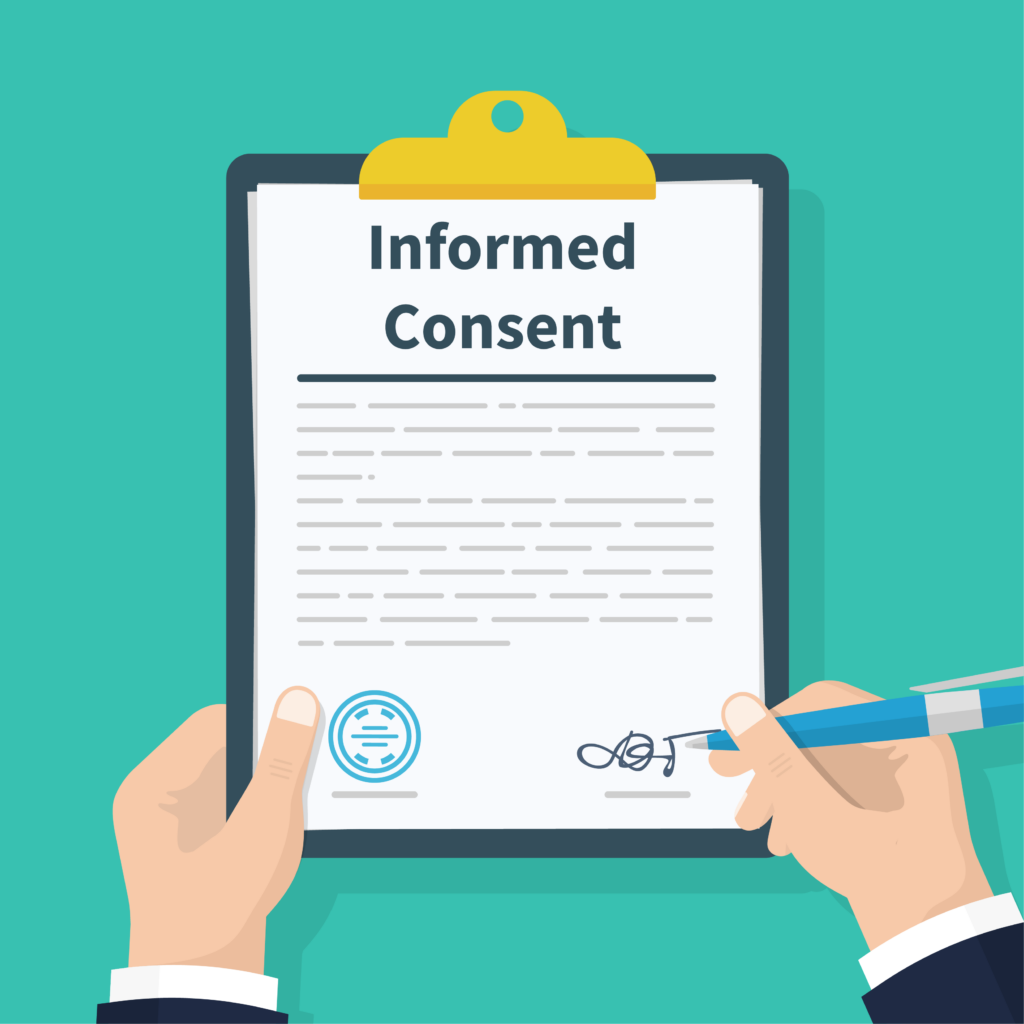By Yolanda Sims, JD, MHA
Loss Prevention and Risk Management Advisor

Generally speaking, all medical treatment requires the patient’s permission (i.e., consent). When a recommended procedure is not simple, commonly understood, or poses some risk to the patient, the consent given must be informed.
What is Informed Consent?
Informed consent is when a healthcare provider educates the patient about a procedure or intervention’s risks, benefits, and alternatives. The state determines the required standard for adequate informed consent. The law in Kansas provides that, except in an emergency, a physician has a legal obligation to make reasonable disclosure of the nature and probable consequences known to the physician involved in a suggested or recommended treatment.
Patient Safety Concerns
Obtaining informed consent is essential to patient-centered care and remains critical to patient safety. The Joint Commission, an organization synonymous with best practices in healthcare, highlights the focus on obtaining a patient’s signature as documentation of informed consent results in varying effectiveness between clinicians and patients.
Encouragingly, the informed consent process is shifting to focus more on collaborative communication and less on signatures. By collaborating with patients, clinicians provide an ethical approach to shared decision-making, which may yield better outcomes. Here are five easy tips that can help improve the informed consent process.
1. Write Consent Forms in Plain Language.
Keep the reading level of consent documents low. Ideally, all written forms and related educational materials should be created with a fifth-grade readability level. Also, visual and digital communication tools should be considered to address some of the inefficiencies in obtaining patient consent. The National Institute of Health and the Centers for Disease Control websites provide information on preparing understandable consent documents and educational materials.
2. Keep Track of Informed Consent Incidents.
Use continuous quality improvement techniques to monitor incidents related to informed consent and develop targeted remediation to identified problems.
3. Focus on Training.
Training support staff, administrators, physicians, non-physician providers, and interpreters will improve understanding of informed consent and the responsibilities and liabilities of healthcare organizations and medical practices.
4. Prioritize Patient Understanding.
The informed consent process begins by educating the patient. This is often the most challenging aspect of informed consent. Occasionally, there may be barriers that impact the process. Such barriers might include
- Language differences
- Hearing impairments
- Education level and health literacy
- Cultural considerations
Overcome these barriers by being prepared to discuss them with the patient. The purpose is to check their comprehension, not their memory.
5. Document. Document. Document.
Documentation is a necessary and final step. Record creation may be the only proof that an informed consent discussion occurred. During each patient encounter, discuss the risks and benefits of the proposed treatment, including reasonable alternatives and the consequences of no treatment. A best practice in complex, high-risk, or invasive treatment cases is to have the patient sign a written form acknowledging the discussion and disclosures. Also, make sure to add notes about the discussion in the patient’s chart.
The informed consent process is more than a piece of paper. The process is an educational activity in which patients are the learners. Make sure the patient understands all the important elements. By simply incorporating these practical tips, you are well on your way to improving the quality of care provided to your patients.
Sources
Joint Commission. (April 2022). Quick Safety 21: Informed Consent: More than getting a signature. https://www.jointcommission.org/resources/news-and-multimedia/newsletters/newsletters/quick-safety/quick-safety–issue-21-informed–consent-more-than-getting-a-signature/informed-consent-more-than-getting-a-signature/#.ZFh-E3bMJPY
Kaibara, Preethy, MD, Esq. “8 Ways to Improve the Informed Consent Process” Journal of Family Practice July 2010 Vol. 59, No. 07:373-377a
Shah P, Thornton I, Turrin D, et al. Informed Consent. [Updated 2022 Jun 11]. In: StatPearls [Internet]. Treasure Island (FL): StatPearls Publishing; 2023 Jan-. Available from: https://www.ncbi.nlm.nih.gov/books/NBK430827/
